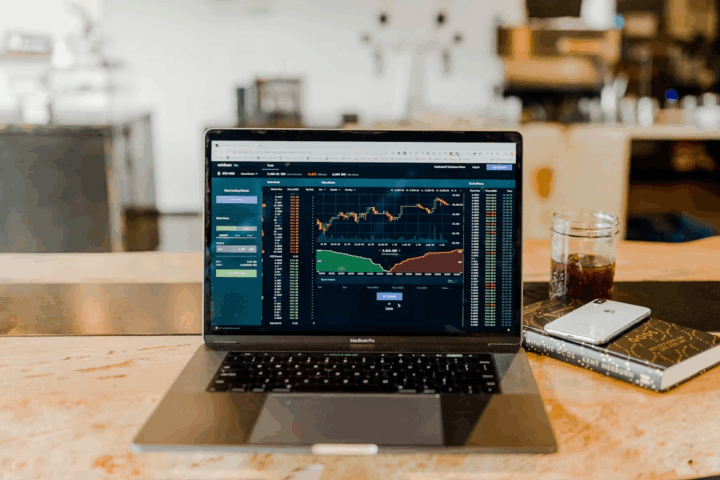Lease accounting isn’t what it used to be. Gone are the days when companies could simply list leases off-balance-sheet and call it a day. Thanks to global regulatory changes—most notably IFRS 16—lease management has evolved from a side task into a full-blown accounting discipline. And with that evolution has come the rise of a new class of tools: lease accounting software designed specifically to simplify complex assets.
For businesses juggling dozens—or even hundreds—of leases across different properties, vehicles, and equipment, the right software doesn’t just help with compliance. It transforms how teams track, manage, and optimize their leased assets. In this article, we’ll explore why this shift matters and how companies are using software to move from confusion to clarity.
Why Lease Accounting Became So Complicated
Lease accounting used to be relatively straightforward. Finance teams tracked operating leases and finance leases, with many operating leases kept off the balance sheet. But with the introduction of IFRS 16 and ASC 842, everything changed.
These new standards require nearly all leases to be reported on the balance sheet—bringing both assets (the right to use the leased item) and liabilities (future lease payments) into clearer focus. While the goal is transparency, the result has been a wave of new accounting complexity for companies of all sizes.
Under IFRS 16, for example, businesses now have to:
- Recognize lease liabilities and right-of-use assets for almost every lease
- Calculate and re-calculate lease values as terms change
- Perform regular impairment testing
- Disclose additional data in financial statements
- Maintain audit-ready documentation for every lease
Manually handling these tasks in spreadsheets quickly becomes unsustainable—especially as lease portfolios grow. That’s where modern solutions come into play.
How Software Solves the Lease Puzzle
Enter lease accounting software: purpose-built tools that automate calculations, centralize lease data, and ensure ongoing compliance with standards like IFRS 16 and ASC 842. For companies managing multiple leases across geographies or departments, these platforms are nothing short of game-changing.
Key benefits of lease accounting software include:
- Automation of calculations such as present value, interest expense, and depreciation
- Centralized lease management in a secure, searchable system
- Easy generation of journal entries in formats that integrate with ERP systems
- Built-in audit trails that track changes, terms, and approval workflows
- Scenario modeling tools to analyze lease renewals, modifications, or terminations
By offloading manual number-crunching and document chasing, finance teams can shift their focus from pure compliance to more strategic analysis.
Why an IFRS 16 Platform Matters
For UK-based companies or any business reporting under international standards, using an IFRS 16 platform is essential. These platforms are tailored to handle the nuanced rules of IFRS 16, including how to treat different types of leases, initial direct costs, lease incentives, and variable payments.
Choosing a solution specifically designed for IFRS 16 ensures:
- Accurate initial recognition of lease assets and liabilities
- Ongoing adjustments when leases are modified or reassessed
- Support for dual reporting (e.g., IFRS and local GAAP) when necessary
- Up-to-date compliance as regulations evolve
This kind of platform turns what could be a logistical nightmare into a more structured, predictable process—giving both accountants and executives more confidence in the numbers they report.
Real-World Impact: Time, Accuracy, and Strategy
It’s easy to think of lease accounting software as just a compliance tool. But the real payoff is often operational. With greater visibility into lease terms and costs, businesses can better manage renewals, avoid costly penalties, and negotiate more favorable terms.
In fact, according to a 2023 survey by Deloitte, 76% of finance leaders said that improving data quality and accuracy was a top reason for adopting automation tools in financial reporting. Lease software plays a big part in that equation—turning messy data into reliable insights.
Companies that once needed weeks to prepare year-end lease disclosures can now do it in hours. And those that struggled with late-term lease costs now receive automated reminders and clear reports.
What to Look For in a Lease Accounting Solution
Not all lease software is created equal. When evaluating platforms, businesses should look for a tool that’s not only compliant but also user-friendly and scalable.
Here’s a checklist of must-have features:
- Full compliance with IFRS 16 and ASC 842
- Integration with existing accounting or ERP systems
- Customizable reporting dashboards
- Role-based access and approval workflows
- Cloud-based access with strong data security
- Ongoing customer support and regulatory updates
Whether you’re a growing startup or a multi-location enterprise, having a system that fits your current and future needs is critical.
Final Thoughts
Lease accounting has entered a new era—and spreadsheets just aren’t enough anymore. The complexity of modern financial regulations, coupled with the sheer volume of leased assets businesses manage today, means that smart software is no longer optional. It’s essential.
By embracing a robust IFRS 16 platform, companies can turn compliance into opportunity—unlocking better control, deeper insights, and ultimately, a clearer financial picture. Because when you simplify the complex, you don’t just follow the rules—you build a stronger business.







